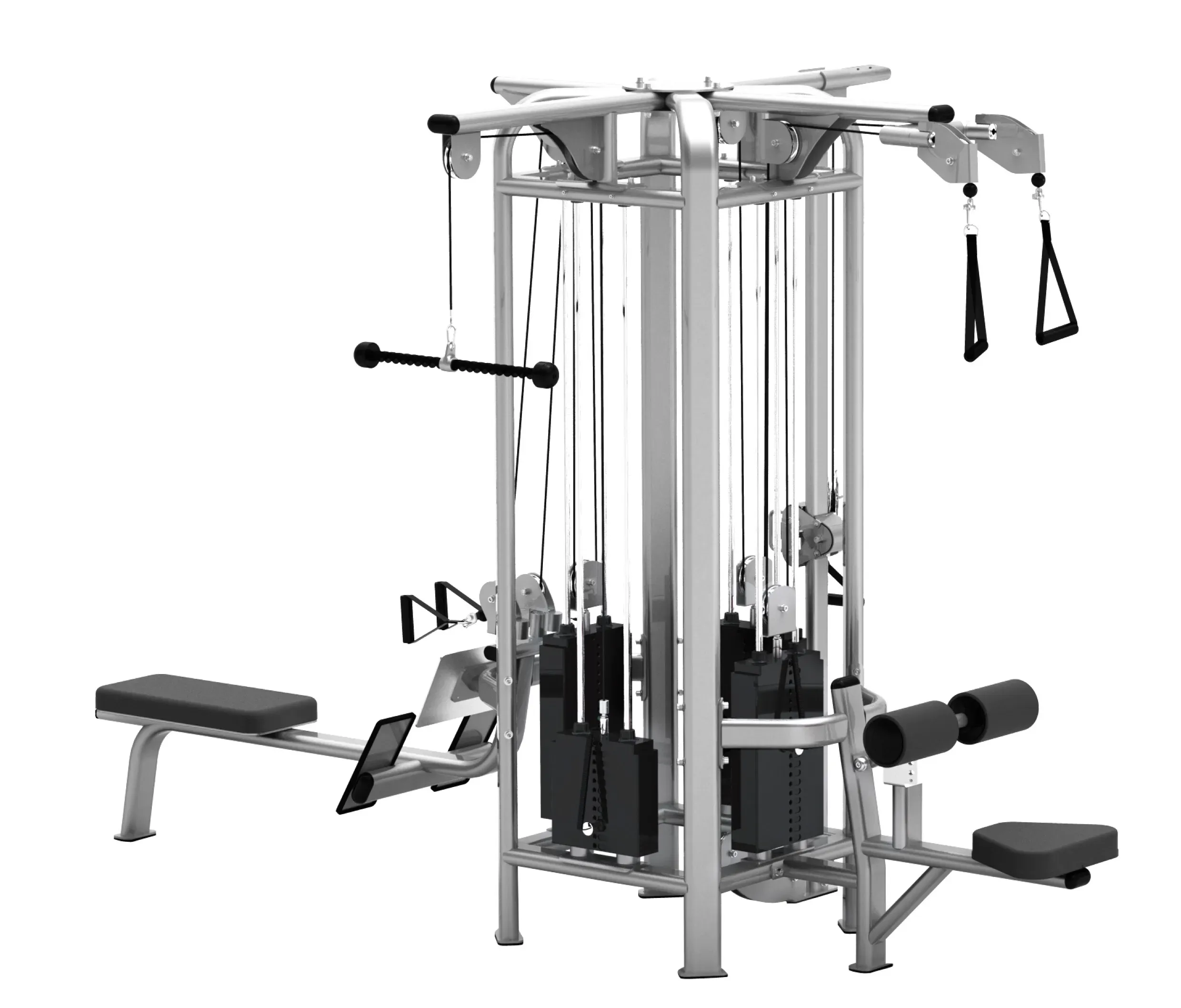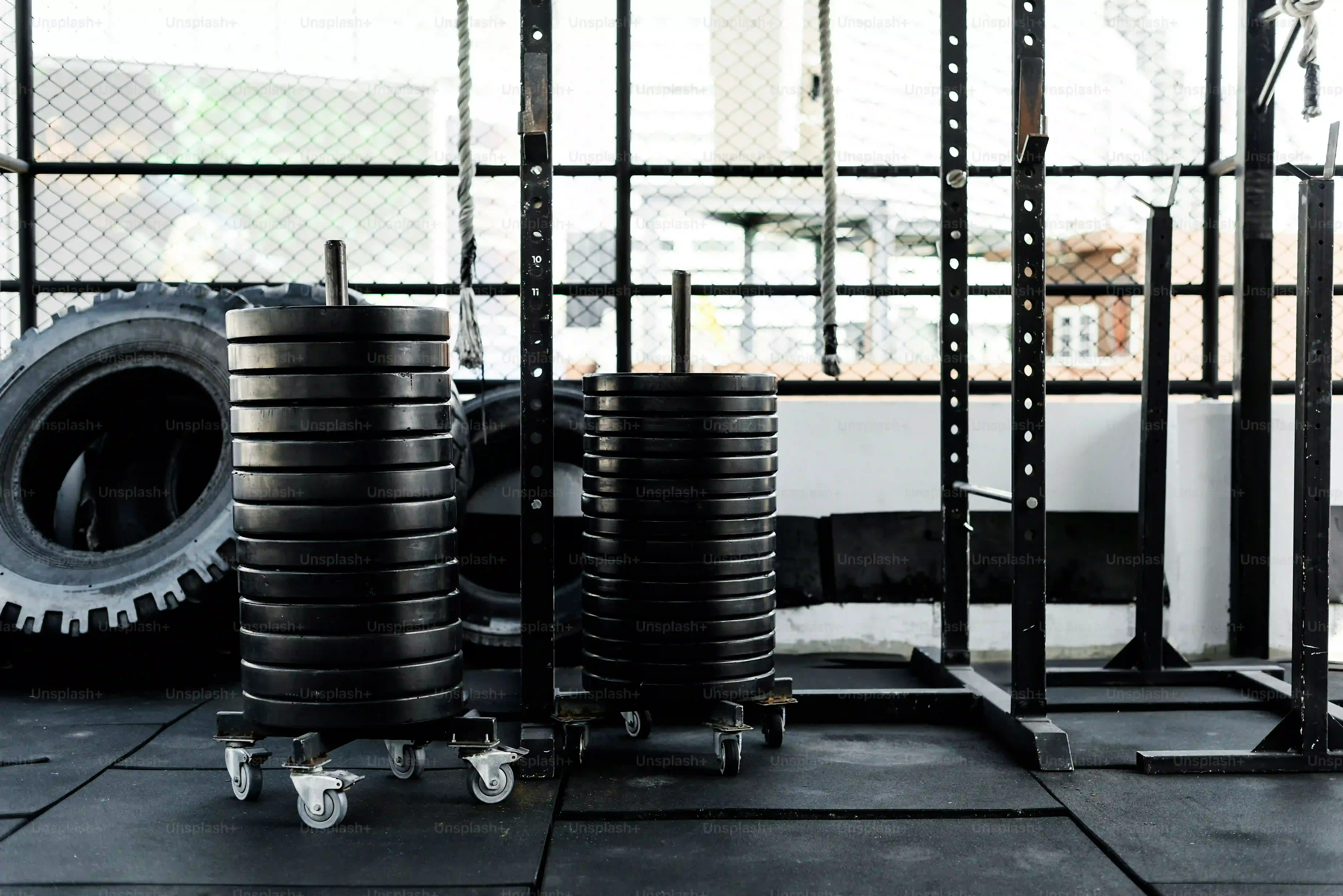Table of Contents
Tired of tripping over scattered dumbbells or waiting for your turn at the overcrowded gym? Maybe you've eyed those sleek multi-gyms but figured they require a spare warehouse. Let's be real, dedicating significant floor space to fitness equipment feels like a luxury many home dwellers just don't have. But what if you could consolidate your workout needs into one intelligent footprint? Enter the 4 station home gym. This isn't just another piece of equipment; it's a strategic move for anyone serious about consistent strength training without sacrificing their living room. It promises a diverse range of exercises for multiple users simultaneously, making it a smart investment for families or roommates. In this article, we'll break down exactly what makes a 4 station home gym tick. We'll explore the essential features to look for, dissect the actual advantages beyond just saving space, talk about where you might actually fit one, and discuss the investment involved. Get ready to rethink your home workout setup and see how a 4 station home gym could be the anchor your fitness routine needs.
What Exactly is a 4 Station Home Gym?
What Exactly is a 4 Station Home Gym?
More Than Just a Machine
Alright, so you've heard the term "4 station home gym" thrown around, maybe seen some pictures of these imposing setups. What are we actually talking about? Think of it as a multi-tool for your muscles. Instead of having a separate bench press, a lat pulldown machine, a leg extension station, and a cable crossover, a 4 station home gym combines several key workout functions into one integrated unit. The "four station" part means it's designed so four different people could potentially use a different function on the machine at the same time, or one person can move seamlessly between four distinct types of exercises without switching machines. It's built for efficiency and versatility in a footprint smaller than four individual pieces of equipment would occupy.
Breaking Down the Stations
Typically, a 4 station home gym includes a mix of popular strength training setups. You'll often find a lat pulldown/seated row station, which is crucial for back development. Another common one is a leg extension/leg curl station, hitting those quads and hamstrings. A third might be a press station, capable of doing chest press, shoulder press, or even incline press depending on the design. The fourth station varies widely; it could be a dedicated low pulley for curls and rows, a triceps pressdown, or sometimes even a functional trainer setup with adjustable pulleys offering a huge range of movements. The goal is comprehensive training in a single piece of equipment.
- Lat Pulldown/Seated Row
- Leg Extension/Leg Curl
- Press Station (Chest/Shoulder)
- Variable Fourth Station (e.g., Low Pulley, Triceps, Functional)
Key Features to Look for in a 4 Station Home Gym
Key Features to Look for in a 4 Station Home Gym
Build Quality and Smooth Operation
so you're eyeing a 4 station home gym. First things first, you gotta look under the hood. Is this thing built like a tank or a flimsy Erector Set? Check the frame – heavy-gauge steel is your friend here. You don't want something that wobbles when you're pulling serious weight. Pay attention to the pulleys and cables too. Are they smooth? Do they feel like they're going to seize up after a month? High-quality bearings and coated cables make a massive difference in how the machine feels and how long it lasts. A smooth motion isn't just about comfort; it's about reducing wear and tear and preventing awkward snags that could lead to injury. A well-built 4 station home gym feels solid, moves fluidly, and doesn't sound like a dying robot when you use it.
Weight Stacks and Versatility
Next up, the weight stacks. How much weight does each station offer? Does it go high enough for your goals, and is it adjustable in small increments? Some machines offer upgrade options, which is handy if you plan to get stronger over time. Beyond just the weight, consider the types of exercises each station *actually* lets you do. Does the press station offer multiple grip positions? Can the leg station hit both extensions and curls comfortably? Look for things like swiveling pulleys on the functional stations, which open up a wider range of movement patterns. The point of a 4 station home gym is versatility, so make sure the design allows you to hit all your major muscle groups effectively and perhaps even throw in some isolation work.
- Heavy-gauge steel frame
- Smooth pulleys and coated cables
- Adequate and adjustable weight stacks
- Multiple grip options on press stations
- Ability to perform both leg extensions and curls
- Swiveling pulleys for functional movements
The Real Benefits of a 4 Station Home Gym Setup
The Real Benefits of a 4 Station Home Gym Setup
The Space-Saving Powerhouse
so the most obvious win with a 4 station home gym? It's a serious space saver compared to buying individual machines. Think about it: a separate lat pulldown, a leg machine, a chest press, and a cable station would eat up half your garage, maybe more. A 4 station setup, while still substantial, condenses all that functionality into one footprint. It’s like getting a multi-tool instead of a whole toolbox for your strength training. This is huge if you're in a typical home and not running a commercial gym out of your basement. You get the ability to do a full-body workout, hitting major muscle groups with dedicated stations, without needing a massive area. It’s practical, plain and simple.
Efficiency and Consistent Training
Beyond just fitting the equipment, a 4 station home gym makes your workouts way more efficient. You can move from one exercise to the next with minimal transition time. No waiting for someone else to finish, no walking across the gym floor. This keeps your heart rate up and maximizes the work you can do in a limited timeframe. Plus, having it right there in your home removes excuses. Bad weather? Don't care. Gym's packed? Doesn't matter. That consistency is key to making real progress. For families or roommates, the ability for multiple people to train simultaneously on a single 4 station home gym is a game-changer, eliminating scheduling conflicts and encouraging shared fitness goals.
- Saves significant floor space
- Consolidates multiple machines into one
- Enables efficient workouts with less transition time
- Facilitates consistent training regardless of external factors
- Allows multiple users to train simultaneously
Finding the Right Spot for Your 4 Station Home Gym
Where Does This Beast Actually Fit?
you're sold on the idea of a 4 station home gym – it saves space, it's efficient, it's your personal fortress of gains. Now comes the million-dollar question: where on earth do you put this thing? These aren't tiny foldable treadmills. A typical 4 station home gym requires a significant footprint, and critically, enough ceiling height, especially for exercises like lat pulldowns where you need full range of motion overhead. You'll need to measure your potential space carefully, not just the length and width, but the height too. Don't forget you'll need some clearance around the machine for access, loading plates (if applicable), and performing exercises safely. A garage, a dedicated basement room, or even a large spare bedroom are common spots, but make sure the floor can handle the weight – these machines, plus weight stacks, are seriously heavy. Plan the route for delivery and assembly; you don't want to buy it only to find it won't fit through the door or around a tight corner.
- Measure Length, Width, AND Height
- Check Ceiling Clearance for Overhead Movements
- Ensure Adequate Space for Access and Use
- Verify Floor Can Support the Weight
- Consider Assembly and Delivery Path
Investing in a Quality 4 Station Home Gym: What to Expect
Investing in a Quality 4 Station Home Gym: What to Expect
The Price of Progress (and Heavy Metal)
Alright, let's talk turkey. A quality 4 station home gym is not a budget item. You're not picking this up for the price of a few months' gym membership. We're talking a significant investment, often ranging from several thousand dollars to upwards of ten grand or more for premium models. The price tag reflects the sheer amount of steel, cables, pulleys, and engineering that goes into building something robust enough to handle serious weight and multiple users simultaneously. What drives the cost? Brand reputation, the quality of materials (heavy-gauge steel, smooth bearings), the weight capacity of the stacks, and the specific features and attachments included. Think of it less as buying a single piece of equipment and more like building a small, highly functional commercial gym condensed into a corner of your house. It's an upfront hit, no doubt, but weigh that against years of gym fees or the cost of buying separate, high-quality machines piece by piece.
Making the Call on a 4 Station Home Gym
So, we've covered the territory. A 4 station home gym isn't a miracle cure for inactivity, but it's a pragmatic answer for multiple users or those needing exercise variety in a contained footprint. We've looked at the hardware, the practical perks beyond just convenience, and the not-so-insignificant matter of where you'll actually put the thing. The investment is real, both in dollars and square footage. Before you click 'add to cart,' measure your space twice, assess your actual training needs, and consider who else will be using it. If the numbers add up and the logistics work out, a 4 station home gym can indeed be a solid foundation for consistent strength training at home, provided you put in the work.